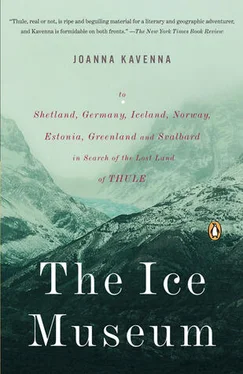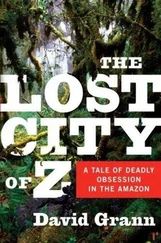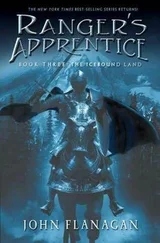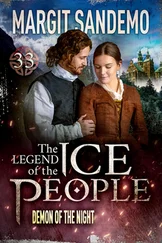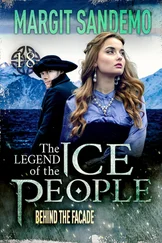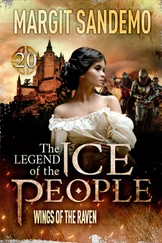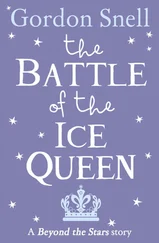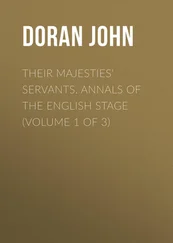At first there was no ruler of the Viking retreat, no administrative centre; the new arrivals stayed on their farms, among the vast flat plains. In 930 a legislative body of important men was created, and Thingvellir was where the settlers gathered, for the meetings of the Althing, the National Assembly. The word recurred across the Viking Empire: in the Tingvold of Norway, the Dingwall of Ross-shire, the Tingwall of Hjaltland and the Tynwald of Dumfries and the Isle of Man. Imagination amplified the uncanny sunsets, the shadows lengthening over the dark plains, and in the Sagas the nuances of legal process mingle with breathy tales of trolls, ghosts, berserks and enchantments. The Vikings had travelled far, they knew the Anglo-Saxon world; their writers knew the works of Bede, St. Augustine, Pope Gregory the Great, Alcuin. In the long winter nights, they told stories; they had many stories to tell. The silent grandeur of the plain at Thingvellir reproached later Icelanders, as the country turned to corruption, and they idealised the past, compiling Sagas and early stories, writing out the Norse myths.
The Icelandic painter Thorlaksson painted Thingvellir in 1900 as a place of rich greys and blues, the mountains reflected on the surface of the lake, a solitary horse in the foreground, staring beyond the frame. An iconic image: the bizarre semi-hostile nature, the semi-wild animals, and the empty silence, as the sky swirls over the dark mountains. In Iceland in 1900 there was no need to paint nature pink, or gold, as Man Ray would later paint forests. The emptiness of the Icelandic landscape hardly called for ironies of paint. There was no need for the blurred visions of Monet and the Impressionists, objects perceived through a haze of light and dust, the snapshot portraits of Toulouse-Lautrec, the fractured images of Picasso and Braque. Thingvellir in 1900 was stark and unrefined—a place of black rifts and pallid lakes, lit by a trembling sun.
It was the same as I stared across the plain. A plain driven through with a dark chasm, caused by the clash of tectonic plates. The plain was silent, except for the sound of cars leaving the car park, their tyres skimming on the wet road. There were a few tourists wandering the slippery trails, peering into the chasms, pausing on the wooden bridges to look at the silver river.
I stood on the plain flanked by deep rifts, gullies in the yielding turf. The river Öxará meandered across, spilling out muddy streams. The lake of Thingvallavatn glinted in the cold afternoon sunlight. It was a strange valley, there was something haughty about its windswept stretches, its indifference to the comfort of its visitors. The paths I walked were wet with fresh mud, and the rain fell harder, sending up a cloud of spray from the lake. The plain was spartan and mysterious; there were a few signs stuck into the mud, signalling the place where malefactors were drowned, or the place where the visitors built their booths, protecting themselves from the swift rain sweeping through the valley. I stood on a bridge over the glistening river watching the rain splash on the surface of the water. The scenery wore the dampness well, the dark rocks were slick with wetness and heavy clouds scudded across the sky.
There was Anthony Trollope, visiting Thingvellir on a tourist trip in the 1870s. With his hosts Mr. and Mrs. John Burns, and the other travellers—Admiral Ryder, Admiral Farquhar and Mrs. H. Blackburn—he rode on horseback across the plain. They had more horses in line behind them, carrying their provisions, which they had brought with them from Scotland, not trusting the local food. Down the rifts in the rock he and his group peered, seeing black deep water at the bottom, ‘almost infernal to be looked upon,’ Trollope shuddered. Mysterious and violent, he muttered. The blasted fields of Iceland were too much for his party; Mrs. Burns his hostess discovered at Thingvellir that she could hardly go any further, her horse had proved uncomfortable, the heat and labour too great, and the bother of riding side-saddle had quite finished her. She slipped from the pony, sweating, apologizing to the party, longing to go to sleep in a bed, she confessed. But they had to sleep in the church at Thingvellir, the women lying on the steps around the Communion table, walled off from the men by a little rail, and the men down the nave, like memorial tablets. They tried to be jovial, but everyone had a curious night, sleeping by the altar of the small wooden church. Waking to find the moon glinting on the Communion silver, casting an ethereal light across the pews. Subterranean heat, eruptions, an ill-omened look to the place, wrote Trollope, who enjoyed a blackened sky and a thick ominous sunset.
At Thingvellir, the nineteenth-century travellers stood, as the tourists stand today, at the Hill of Laws, Lögberg—‘the heart of Iceland, ’ ‘the greatest marvel,’ wrote William Morris. It was Morris I was thinking of, as I walked towards the Hill of Laws, where the Speaker of Laws stood, his voice echoing off the rocks of Almannagjá, reverberating back into the valley from the sides of the chasm. For Morris, the landscape of Iceland was the last link to the world of the Icelandic Sagas. At Thingvellir he was quite ecstatic, writing in his rain-splashed diary as the storm dripped onto his hat, and refusing to go into the church because he was having a sudden and perfect vision of Ref the Sly. Morris wandered around, the rain soaking through his hat, thinking about the Vikings. Fantastically intrigued by the Vikings, seeing phantoms, his imagination transforming the plains. If he came to a patch of marshland, roughly in the right place, he thought that here Thorolf Dark-skin, who had been stealing livestock and offering up both men and animals, had sat down in the swamp and wept, because he saw his enemies were going to kill him. Jokul son of Ingimund had followed him there, to this piece of marshy ground Morris had just arrived at, and it was here or roughly hereabouts, he imagined, that Jokul said to Thorolf Dark-skin that he was a great monster and a villain without courage. Here, Morris suspected, Jokul dealt the death blow and Thorolf Dark-skin sank into the marsh. Here was the place where Njal the lawyer stood stoically awaiting his nemesis, and where Osvif lived, the son of Helgi son of Ottar son of Bjorn the Easterner son of Ketil Flat-nose son of Bjorn Buna, and this was where Gudrun did the washing, the most beautiful woman to have lived in Iceland.
Morris found a rough utopia: his bent was anti-modern; his tastes turned to lavish medieval scenes, knights on horseback, damsels with long tresses, and in Iceland he saluted a simple and archaic life. He savoured the small settlements, their low gabled sheds like grey tents, built on a rare patch of green in the desert, with sheep and cows grazing around. For Morris, it was an ‘Isle of Refuge,’ the home of those ‘representatives, a little mingled with Irish blood, of the Gothic family of the great Germanic race.’ A country very remarkable in aspect, he wrote, little more than a desert, yet the most romantic desert to look at: a huge volcanic mass still liable to eruptions of mud, ashes and lava. Anyone travelling there would be apt to hope, wrote Morris, if they knew nothing of Iceland’s history, that its terrific and melancholy beauty might once have been illumined by a history worthy of its strangeness; nor would they hope in vain. The bizarre contours of the lava fields, the exploding glaciers, the mountains dripping fire, had brought forth a race of bold warriors: ‘the delightful freshness and independence of thought of the early settlers, the air of freedom which blows through them, their worship of courage, their utter unconventionality. ’ Their heritage, he added, had been sustained to the present day. The modern-day Icelanders, as Morris found them, spoke the language of the earlier Gothic tribes, ‘almost intact,’ and ‘the shepherd on the hill-side, the fisherman in the firth still chant the songs that preserve the religion of the Germanic race. . . .’
Читать дальше
